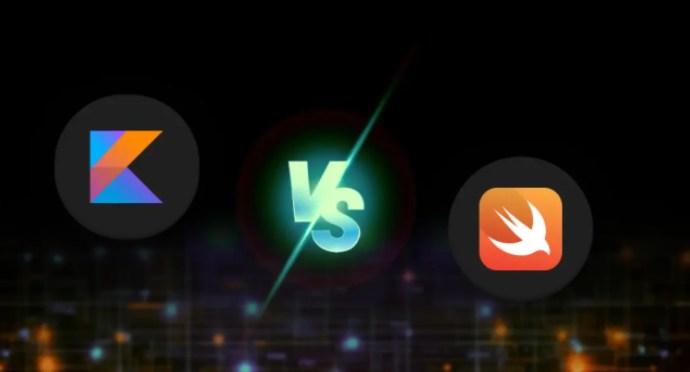What programming languages will be needed to create applications in 2025: from idea to release

The IT world is changing. This brings with it a number of innovations. Application development has reached a new level. All because of AI, AR/VR, and cross-platform technologies. But there is still stability. The programming language remains the main tool. It determines the speed of development, performance, and the chance of scaling the application. As a rule, the following are used for mobile applications based on Apple and Android software:
Swift is the main language for iOS. In 2025, Swift 6 provides native performance and integration with Apple Intelligence.
Kotlin – the standard for Android devices. Support for Jetpack Compose and multi-platforms helps integrate a single code base.
Dart – a hit approach. Its single code works on all platforms where performance is native.
It is important to note that difficulties may arise during development. These are related to software downloads. Among real-life cases, Android device users need to install the 1xBet apk file. This is due to Google Play restrictions. Such utilities require knowledge of Kotlin or Java for signing and security. The system is configured in such a way that users can bypass it with a single click.
When you need to implement a web application concept, it is better to choose TypeScript. This is an improved version of JavaScript with typing. It is used in most large projects, such as React or Angular. It would not hurt to familiarize yourself with the IT language Rust. It is needed for high-load backends. WebAssembly allows you to run Rust code in a browser. It even has the performance of C++.
In addition to the languages listed above, additional tools will be in demand in 2025:
Python – for server-side development, AI integration, analytics, and automation;
C++ – a classic choice for developing high-performance modules, games, or graphics processing;
Go – for scalable backend functionality.
To successfully create a modern application, it is important for developers not to limit themselves to one language. A competent combination of Kotlin or Swift with cross-platform tools and an understanding of server technologies provide an effective path from idea to full release.
The difference between native, hybrid, and cross-platform development
The choice of mobile app development method directly affects the budget, timing, speed, and user experience. In 2025, there are three main approaches to development.
| Development type | Features | UI/UX quality | Pros | Cons | One code for all platforms |
|---|---|---|---|---|---|
| Native (Kotlin, Swift) | Creation of separate applications for Android and iOS | Ideal | Maximum performance, access to all APIs | More expensive, requires two teams | No |
| Hybrid (Ionic, Cordova) | Application shell, inside – web code | Outdated | Quick start, inexpensive development | Poor performance, issues with complex UI | Yes |
| Cross-platform (Flutter, React Native) | One code – two applications | Good | Optimal balance of price and quality | Limited access to platform features | Yes |
More specifically, the native approach is compatible when the application must operate with high performance, have complex animations and graphics, and is designed for long-term development. Such programs are deeply integrated with the device (camera, Bluetooth, voice assistant, etc.).
Hybrid solutions are chosen when you need to quickly test an idea, have a limited budget, the program's functionality is simple, and speed to market is important. In this case, this method is relevant for gaming platforms for which the release is scheduled in advance.
Cross-platform development is a balance between quality and cost. It is suitable when:
Android and iOS are needed simultaneously;
a single technology stack is important;
the interface is not too complex;
the team is small and the deadlines are tight.
For MVP (the first version of a product with a minimum set of features), a hybrid approach is often chosen, and for mass commercial applications, a cross-platform approach is chosen. When it comes to high-load services, a native approach is suitable.
How to avoid mistakes when choosing a programming language
An IT product should have a minimum number of bugs. Therefore, the choice of programming language should not be underestimated. A mistake can lead to costs and timing issues. That is why experts advise taking a systematic approach to the choice. Before starting a project, developers analyze several parameters:
The purpose of the application and the required performance.
Platform: Android, iOS, or both.
The team's level of experience.
The budget and development timeline.
The planned load and development prospects.
For example, many layout designers compare the main types of programming languages. They need to do this to minimize the risk of errors.
Language
| Language | For which platforms | Pros | Cons |
|---|---|---|---|
| Kotlin | Android | High performance, Google support | Android specialists are needed |
| Swift | iOS | Fast, secure, modern | Only works with Apple products |
| Flutter (Dart) | Android, iOS | Single code for two platforms, fast UI | Heavier builds |
| React Native | Android, iOS | Uses JavaScript, quick start | Limitations on native functions |
| Java | Android | Large code base and documentation | Less modern syntax |
In addition, beginners make typical mistakes, such as ignoring the long-term strategy of the product. Here, it is not worth focusing exclusively on the visuals and balance of the project. Or they choose a “trendy” language without analyzing the requirements. The modern “Python” that everyone is so eager to learn is often useless for developing mobile software. Failure to assess the risks of scaling and focusing solely on development costs can lead to the failure of the concept.
To avoid problems, experts recommend:
Clearly define the business goal and functionality of the application.
Consider future updates and expandability.
Rely on the existing level of competence of the team.
Analyze the popularity of the language and community support.
Familiarize yourself with the basic technologies before approving the project.
The technical component of the future product is the basis for a successful start in IT. By the way, it is competent analysis that allows you to avoid mistakes.
The best technologies for 2025
Today, convenient and powerful tools are needed to create modern operating systems and applications that work on different platforms (phone, computer, tablet).
The “core” of operating systems is still written in C and C++. However, everything above that (system programs, utilities, and regular applications) is done in simpler and more modern languages. The most popular technologies right now are Kotlin, Flutter, Rust, Swift, and Dart.
It is also worth paying attention to two new promising languages for system programming: Zig and Carbon. They are positioned as safe and productive replacements for C. Zig is already used in experimental bootloaders and drivers.
In 2025, the trend is clear. Even system programming is moving away from pure C/C++ towards secure, productive, and cross-platform solutions. Kotlin, Swift, and Flutter are leading the way where development speed and a unified code base are important. As for Rust, the priority here is security and performance at the kernel level.
The choice of technology depends on the task. When you need to build a desktop system, it's worth choosing Kotlin/Swift/Flutter. For programs with a low-level component, Rust and Zig are suitable. In addition, multilingualism has become commonplace for developers. The combination is becoming more effective than the classic approach in one direction.
Languages and technologies for the full development cycle
Modern mobile development is a multi-level process. A whole technological cycle takes place before an application reaches the web store. Understanding the key tools helps to build an effective and scalable architecture.
One of the first stages is prototyping. This process allows you to visualize the future product, test user scenarios, and agree on the logic before you start programming. At this stage, Figma, Sketch, and Adobe XD tools are in demand. They allow you to quickly create clickable mockups and test hypotheses.
The next important level of software development is the backend infrastructure. It creates the server logic, authorization, databases, and interaction with external services. In 2025, Python, Go, Node.js, and Java stand out among the popular languages for backend development. They are suitable for creating scalable APIs, microservice architecture, and high-load systems.
Then DevOps processes are connected. They are needed to automate the assembly, testing, and publication of the application. The final stage involves the integration of external tools:
advertising network SDKs;
analytics systems;
APIs for push notifications.
They help track user behavior and optimize product performance. When the entire technology cycle is followed, there is no doubt about the reliability of the application. The product becomes competitive and visually appealing.
Which stack will prevail in 2026-2030: why one language is no longer sufficient
The world of operating system and system software development is entering an era of multilingualism. Pure C/C++ remains only in kernels and drivers. Everything above that is written using modern, secure, and productive tools. In the next five years, the market will be definitively divided between four key technologies, but it will not be one of them that wins, but rather a smart combination of them. By 2030, Rust will become the undisputed leader in low-level programming. It will likely completely replace C in Android and Linux for new drivers and become the basis for new operating systems (Redox, Theseus, Fuchsia-like).
Swift, as the monopolist of the Apple ecosystem, is a frequent choice for server and cross-platform system services due to its openness and performance. And, of course, Flutter + Dart. An unexpected but already proven leader in the creation of system shells, settings, and UIs for new Linux distributions, automotive operating systems, and IoT platforms.
No single language covers all tasks. Even when combined with AI technologies, it is still not possible to achieve the expected result. Rust is ideal for security and performance, but too verbose for rapid UI prototyping. Flutter provides instant hot reloading and a beautiful interface within days, but is not suitable for drivers. Kotlin and Swift provide seamless integration with existing giant ecosystems.
Successful projects of 2025-2030, such as Fuchsia, HarmonyOS Next, and new Linux distributions, are already actively using this multi-layered approach:
Rust in the kernel and critical modules - Kotlin/Swift for system services - Flutter for the entire user interface
Single languages are gradually losing out and giving way to more adaptive and universal system approaches to creating interactive applications. The future belongs to teams and companies. Those who know how to competently combine the best of different worlds occupy top positions and produce innovative and unique concepts. Those who continue to bet on “one language for everything” will simply not be able to release their product before their competitors. Over the years, competition has become increasingly fierce. For the most advanced developers, creating a mobile application will not be a problem if they respond to trends and efficiency in a timely manner.











